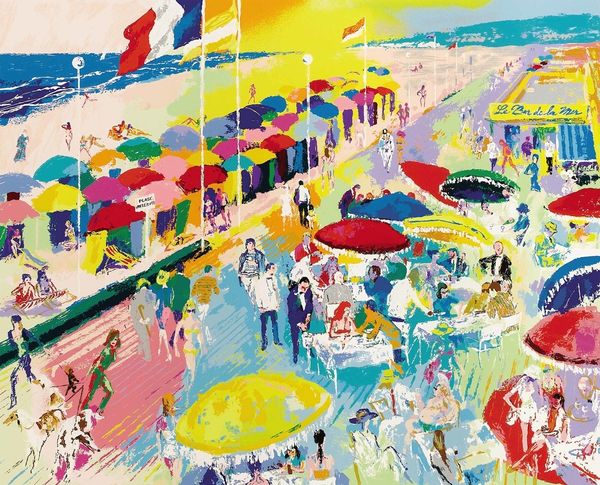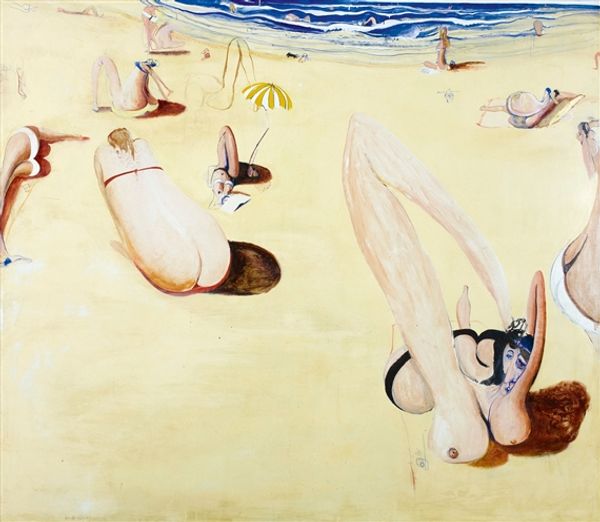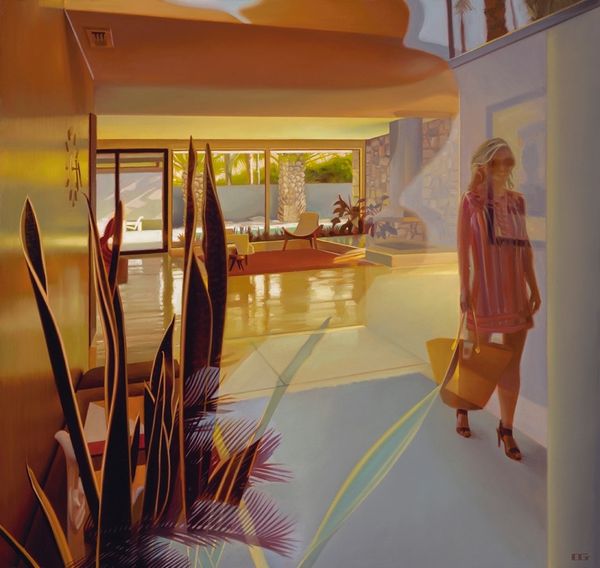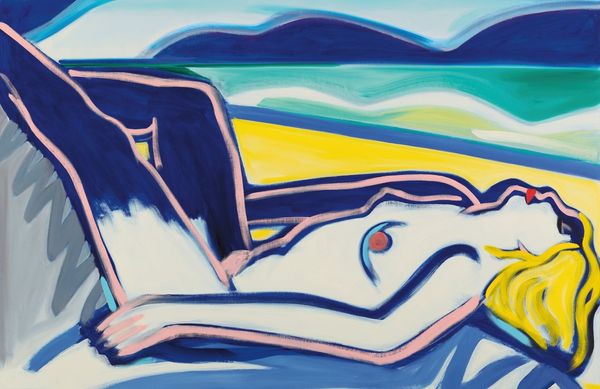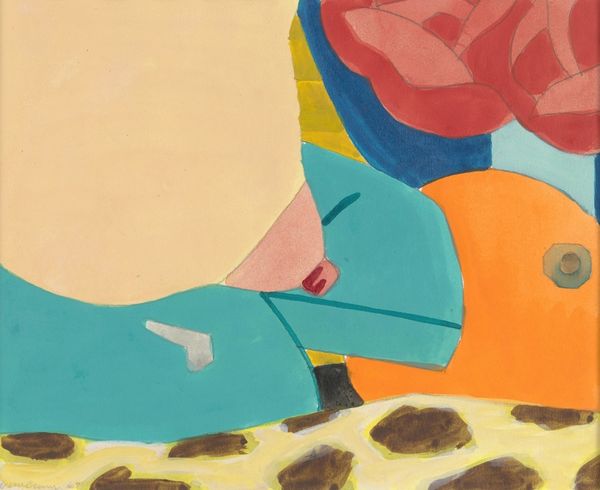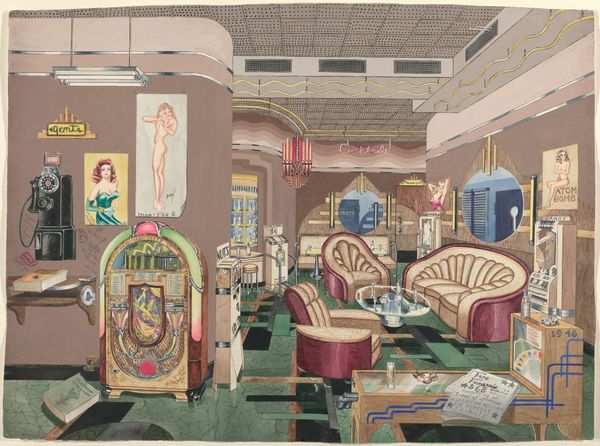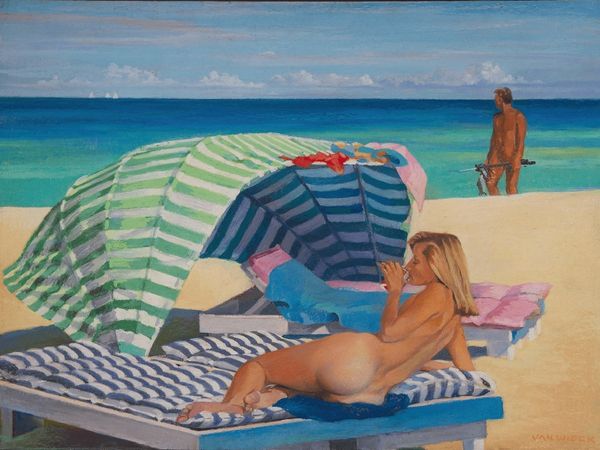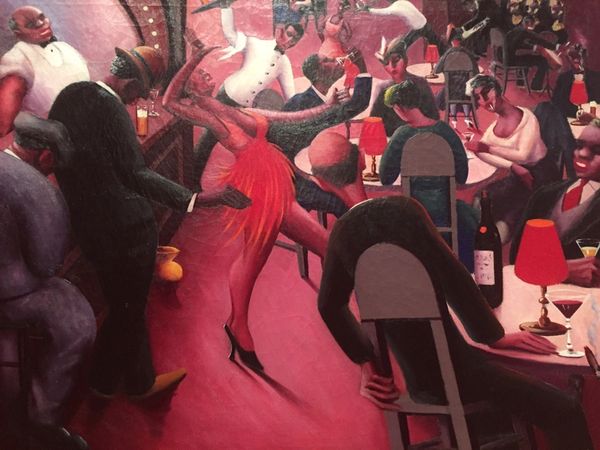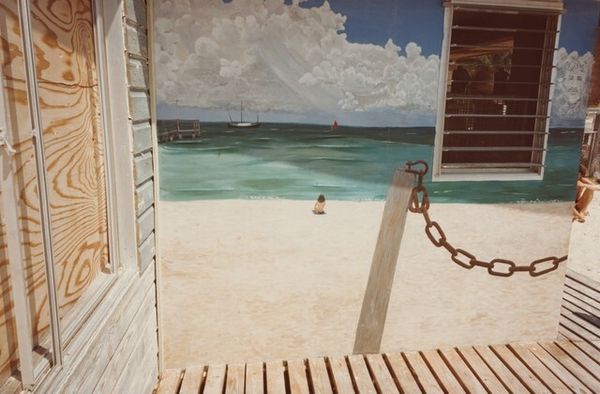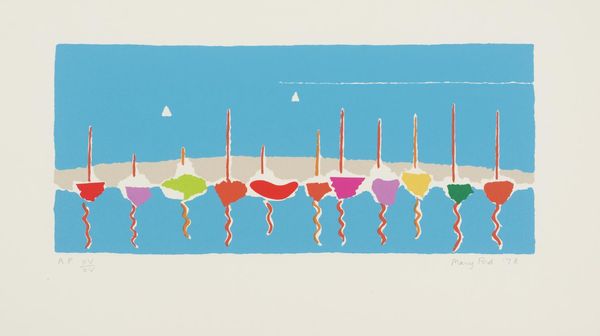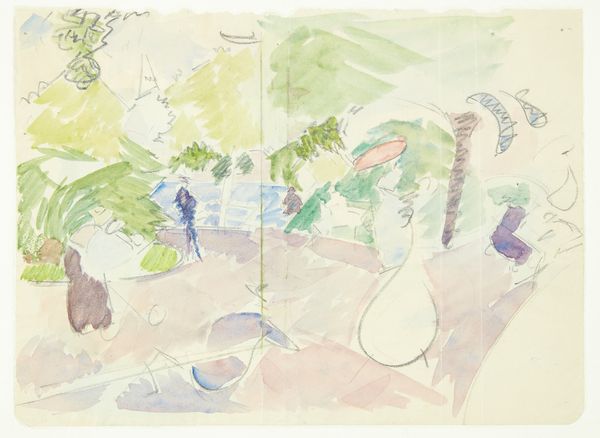
Copyright: Clarence Holbrook Carter,Fair Use
Editor: This is Clarence Holbrook Carter's "Carousel," painted in 1979. I find its flattened perspective and pastel hues kind of unsettling, especially with the beach scene visible behind the ride. What do you make of it? Curator: It's interesting how Carter positions this familiar symbol of childhood joy against a rather static seascape. Think about the cultural moment: the late 70s. Pop Art's influence is clear, but it’s a Pop Art drained of its earlier optimism. Editor: Drained? How so? Curator: Well, consider the context. The American Dream was under scrutiny. The Vietnam War had ended, economic uncertainty loomed. The carousel, once a symbol of carefree innocence, now appears almost ghostly, the vacant stares of the horses perhaps reflecting a sense of national disillusionment. Does that resonate with you? Editor: I see what you mean. The muted colors and almost clinical depiction take away that feeling of fun and excitement that you'd usually associate with a carousel. It makes me think about how even innocent things can be re-interpreted over time, charged with new meanings based on shifting societal anxieties. Curator: Precisely. Carter gives us this facade of Americana, but underneath, he seems to be asking us to confront a deeper unease about the promises and realities of American life. It becomes a comment on the public perception of joy and its accessibility, or inaccessibility, to different social strata. Editor: Wow, I wouldn't have seen all that on my own. I definitely learned something new about how an artist can use familiar imagery to make complex social commentary. Thanks for that perspective. Curator: And thank you. Thinking about it from your viewpoint as a student reminds me that art continues to speak to each generation in fresh and relevant ways.
Comments
No comments
Be the first to comment and join the conversation on the ultimate creative platform.
